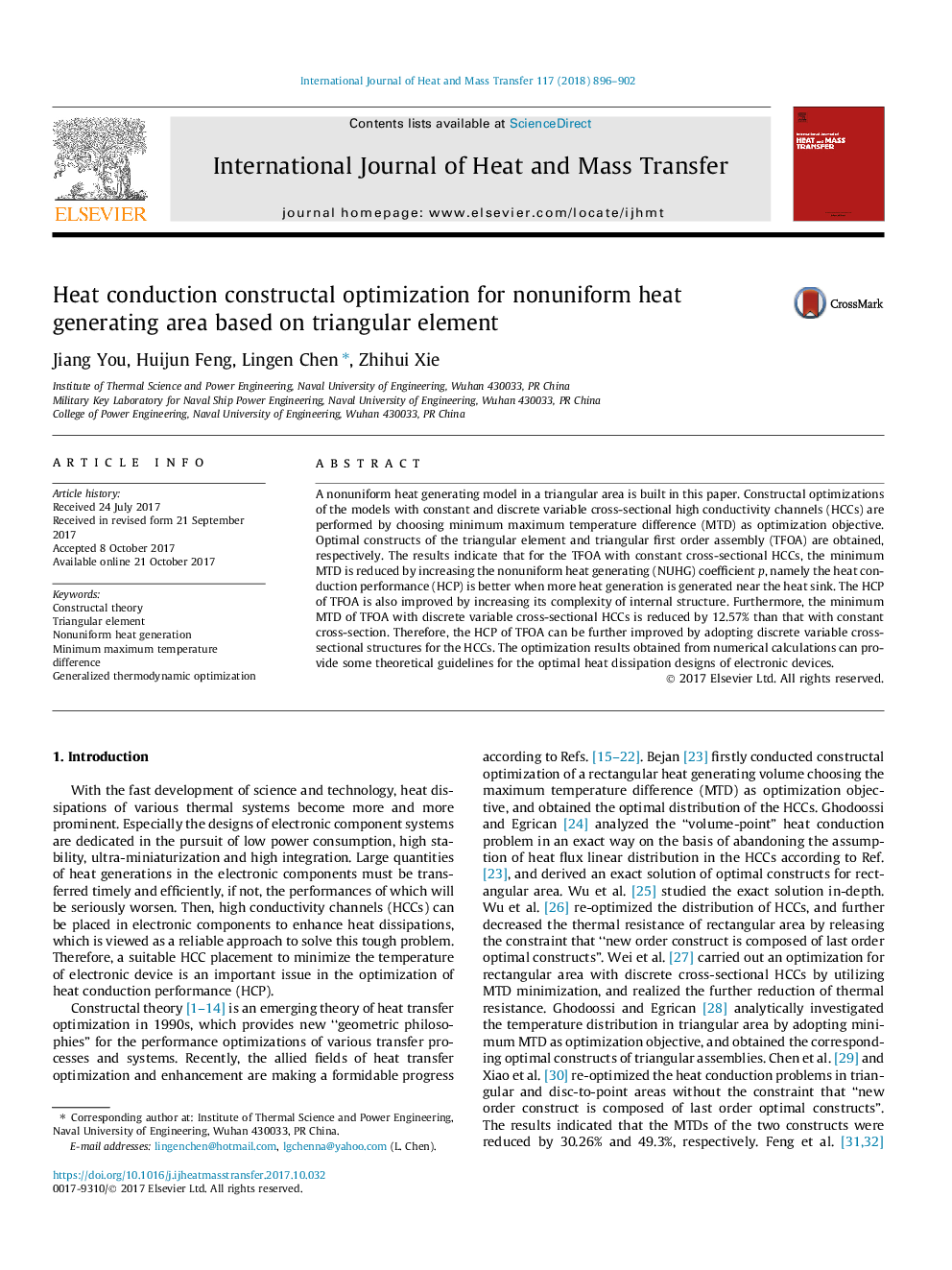| Article ID | Journal | Published Year | Pages | File Type |
|---|---|---|---|---|
| 7054847 | International Journal of Heat and Mass Transfer | 2018 | 7 Pages |
Abstract
A nonuniform heat generating model in a triangular area is built in this paper. Constructal optimizations of the models with constant and discrete variable cross-sectional high conductivity channels (HCCs) are performed by choosing minimum maximum temperature difference (MTD) as optimization objective. Optimal constructs of the triangular element and triangular first order assembly (TFOA) are obtained, respectively. The results indicate that for the TFOA with constant cross-sectional HCCs, the minimum MTD is reduced by increasing the nonuniform heat generating (NUHG) coefficient p, namely the heat conduction performance (HCP) is better when more heat generation is generated near the heat sink. The HCP of TFOA is also improved by increasing its complexity of internal structure. Furthermore, the minimum MTD of TFOA with discrete variable cross-sectional HCCs is reduced by 12.57% than that with constant cross-section. Therefore, the HCP of TFOA can be further improved by adopting discrete variable cross-sectional structures for the HCCs. The optimization results obtained from numerical calculations can provide some theoretical guidelines for the optimal heat dissipation designs of electronic devices.
Related Topics
Physical Sciences and Engineering
Chemical Engineering
Fluid Flow and Transfer Processes
Authors
Jiang You, Huijun Feng, Lingen Chen, Zhihui Xie,
